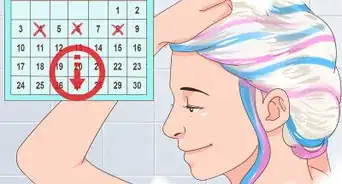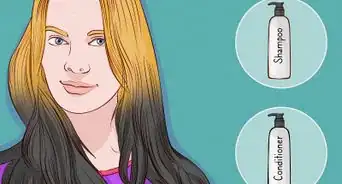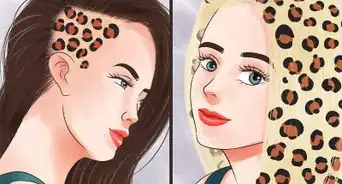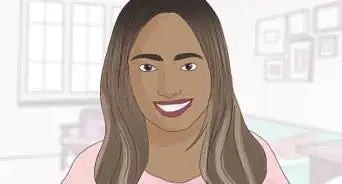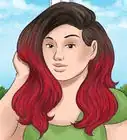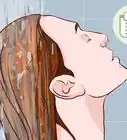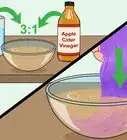This article was co-authored by April Ferri. April Ferri is a Professional Hair Stylist and the Co-Owner of Widows Peak Salon, a hair salon based in Los Angeles, California. With over ten years of experience, April specializes in hair coloring and enhancing and transforming natural tones into vibrant shades for beautiful and low maintenance hair. Her work has been featured in Voyage LA Magazine, and she has worked as a stylist for LA Fashion Week.
There are 9 references cited in this article, which can be found at the bottom of the page.
This article has been viewed 18,502 times.
The results of this beauty trend are akin to rainbow-colored hair, but have more subtle, pastel hues. Celebrities like Kelly Ripa and Hilary Duff have been spotted sporting this colorful look. The array of soft colors in this hairstyle is similar to the depths of an opal—hence its name. Because pastel colors are light, they fade quickly, so they’re a luxe way to freely experiment with unconventional hair colors.
Steps
Lightening Your Hair
-
1Don’t wash your hair beforehand. Color adheres better to unwashed hair. Bleach and dye may irritate or even burn your scalp without the protection of your natural oils.[1]
- If you already have pale and entirely ash blonde hair, you can skip the lightening part.
-
2Comb and section your hair. First use a wide-tooth comb, and make sure your locks are completely tangle-free. Part hair into 4 equal sections with a fine-tooth comb. Do this by parting your hair straight down the middle of your head from front to back, and then again across your head from one ear to the other. Twist the top 2 sections up completely, and secure them with plastic clips. Part the back 2 sections down the middle.
- If you’re having trouble parting or sectioning your hair in the back, stand in front of a large mirror. Hold a smaller mirror in front of you above your head with one hand, and use your comb with the other.
- Never use metal clips when bleaching or dyeing your hair, as the metal can react with the bleach or other chemicals in the dye and damage your hair.
Advertisement -
3Mix powdered bleach with developer. Use 1 ounce (28.3 g) of powder bleach for every 2 ounces (56.7 g) of developer. You can find these products online or at local beauty supply stores. A lightener is necessary to lift your hair to a pale shade of blonde.
- Use a 20 volume developer. Don’t use 30 or 40 volume developers at home.
- Bleach powder and volume developer typically come together in kits. If your hair is thick or longer than your shoulders, you’ll need 2 kits.
- Bleach kits usually come with 35 or 40 volume developer so be very careful when buying bleaching kits and using higher volume developer as it is much more damaging to your hair![2]
- If you’ve never lightened your hair with bleach before, it’s best to go to a professional to get it done. Bleaching can damage your hair and/or scalp, and should be used very carefully.
-
4Paint sections of hair. Take down sections of hair over a sheet of foil, beginning with the bottom sections. Paint lightening mixture onto the hair with a brush, starting from the middle of each section and going to the ends. Leave the roots until you have covered the mid-strands to ends. Make sure to thoroughly saturate the hair with the brush, using multiple strokes in various directions as needed. Roll each section up into the sheet of foil after you paint it. Once finished, leave the mixture in your hair for up to 45 minutes, until your hair reaches a yellow stage.
- You may want to keep your darker roots and apply the opal effect to only the ends of your hair. If so, leave a few inches or centimeters of hair close to your scalp (or however much you prefer) untouched with each section you paint.
- Make sure to wear gloves and follow all safety precautions that came with your lightening kit. Check your hair with gloved hands every 5 to 10 minutes. Never leave bleach on your hair for longer than 45 minutes.
- Fine hair lightens more easily than coarse hair. Thus fine hair will process faster than coarse hair.
-
5Wash out the lightener. Shampoo the hair to fully cleanse your hair of the mixture. Don’t use conditioner at this point. Towel dry your hair.
-
6Confirm that your hair is light enough. Any sections of hair you’ll be using the opal technique on must be a clean blonde rather than brassy or orangish.[3] If your hair is still orange rather than yellow, you’ll need to tone out the orange and/or lighten your hair more.[4]
-
7Remove yellow or orange tones with a blue or purple shampoo. After bleaching, wash your hair with a blue- or purple-toned shampoo. Look for a shampoo designed to work safely with bleached or color-treated hair, and follow the directions on the bottle carefully. Make sure to rinse the shampoo out thoroughly to avoid staining your hair blue or purple.
- Don’t use the shampoo too frequently, as it can dry out or discolor your hair. Try using it once a week to brighten up your hair and minimize yellow, orange or brassy tones.
-
8Use a blue-based toner to neutralize stubborn orange hues. Combine an ashy toner with a purple- or silver-based shampoo and conditioner. Mix 1 part conditioner to 1/4 part toner or semi-permanent hair dye. Apply it with a brush and let it sit for 15 to 20 minutes before rinsing it out.[5]
- Condition your hair and wait at least a week before lightening your hair with bleach again. When you reapply the bleach, leave it in until your hair becomes yellow (about 20 to 30 minutes). Then rinse it out completely right away.
Creating a Base Color
-
1Mix the base color. The goal is to achieve a silver blonde hue. Combine an ash blonde toner with 10 volume developer in a bowl. Use a 1:2 ratio. Stir it well with a brush.
-
2Part your hair into sections. Make 4 equal sections and clip them up with plastic clips. Prepare sheets of tinfoil and a new hair coloring brush for applying the base color. Begin dyeing the front sections of your hair first.
- Wear gloves whenever you’re using hair dye. Make sure you’re in a well-ventilated area (such as a bathroom with the fan on and/or window open). Have a damp paper towel nearby to wipe away any dye that gets on your face or neck.
-
3Brush on the color. Do this section by section, making sure to coat the hair thoroughly. If you’re only dying the ends of your hair, just look for the lightened portions and paint them.
-
4Leave the color in according to the product’s directions. Once the appropriate amount of time has elapsed, thoroughly wash the color out of your hair. You can use shampoo to make sure you’ve completely removed the product. Allow your hair to dry before proceeding with color streaking.
- Hair dye processing times typically take between 15 and 45 minutes, but you should always follow the length of time in the product’s guidelines.
- The color may appear slightly lavender or blue at first. After a couple of washes, it will set into a silver shade.[6]
Adding Streaks of Color
-
1Mix pastel colors in separate bowls. Create pale shades of orange, blue, purple and green by diluting color with white conditioner to achieve softer hues.[7] Add a small amount of color into each bowl using conditioner as a base.[8]
- Have a separate brush ready for each bowl of color.
- Alternately, you can use purchase pre-mixed pastel colors.[9]
-
2Apply pastel colors liberally. Brush different pastel shades onto sections of your hair in streaks. Alternate between thin and chunky sections. Let your inner artist take over by blending complementary pastels on top of each other.[10]
- For example, blend pale lavender into light yellow or green to achieve a look of iridescence.
- Optionally, you can use pieces of foil as a backing when you’re brushing on colors.
-
3Add vivid colors subtly. Mix the colors in separate bowls. You can skip adding conditioner, or add a small amount of white conditioner. Create a rich green, blue and purple, each with its own brush and bowl.[11]
- The rich colors should be accents to the pastel. For example, brush a bit of a vivid color on the end of a section already colored with pastel.
-
4Remove the color. Let it sit as long as the product instructions advise. Then rinse the color out of your hair. You can use shampoo to thoroughly cleanse your hair, and follow up with conditioner. Make sure to use shampoo and conditioner that are safe for color-treated hair.
Maintaining Opal Hair
-
1Condition your hair as needed. If your hair looks damaged or feels dry to the touch, visit a hairdresser for a moisturizing treatment. Alternatively, you can make your own. Quenching thirsty locks will help your color to last.[12]
- Apply a coconut oil treatment to your hair once per week, or when your hair feels dry. If your hair becomes weighed down and greasy, use the treatment less often.
-
2Alternate shampoos. Use a moisturizing, sulfate-free shampoo. Once in a while, use a purple or blue toning shampoo. If you use the latter too often, the purple or blue can begin to tint your hair. But if you lather with it only occasionally, it will prevent your hair from shifting to beige.[13]
- Invest in a quality, sulfate-free conditioner and a salon grade shampoo for colored hair.[14]
- Use a blue or purple toning shampoo a few times per month.
-
3Maintain your roots and color streaks. Touch up your roots every 4-8 weeks, or as needed. When you notice your rainbow colors fading away, repeat the color streaking method. Opal hair color is high maintenance and tends to fade fast.[15]
- Always divide your hair into clean sections when you touch up your roots. You don't want to overlap your color—that's when you're going to start getting bands in your hair.
Community Q&A
-
QuestionIf I have 3 semi-permanent colors painted onto thin sections of hair, won't the colors run together and onto the blonde hair when I rinse out the dye and then again each time I need to shampoo?
 Elizabeth A GalpinCommunity AnswerDepending on the hair dye, the colors shouldn't run together if you make sure to separate them while you're dyeing it. If you want to be extra careful, wash your hair in the sink and put towels or another material in between sections or over the blonde hair the first couple of times you rinse the excess dye out.
Elizabeth A GalpinCommunity AnswerDepending on the hair dye, the colors shouldn't run together if you make sure to separate them while you're dyeing it. If you want to be extra careful, wash your hair in the sink and put towels or another material in between sections or over the blonde hair the first couple of times you rinse the excess dye out.
Warnings
- Always wear gloves when applying hair color.⧼thumbs_response⧽
- Bleach is damaging to hair. Follow all product instructions and make sure to keep your hair well-conditioned before and after the process.⧼thumbs_response⧽
- Never allow hair color to get into your eyes. Keep a moist paper towel nearby during coloring and use it to wipe away any excess dye that gets onto your face or neck.⧼thumbs_response⧽
- This look is an advanced hair coloring technique. If you aren’t well accustomed to at-home coloring, get a professional colorist to assist you.[16]⧼thumbs_response⧽
- If your hair is dark, it may take several dye sessions in order to achieve this look. This means you may have orange-tinted hair in between.⧼thumbs_response⧽
Things You'll Need
Lightening Your Hair
- Wide-tooth comb
- Fine-tooth comb
- Plastic hair clips
- Large mirror
- Small mirror
- Powdered bleach
- 20 volume developer
- Foil sheets
- Hair coloring brush
- Shampoo
- Towel
- Conditioner
- Blue- or purple-toned shampoo
- Blue or purple toner
Creating a Base Color
- Toner
- 10 volume developer
- Bowl
- Hair coloring brush
Adding Streaks of Color
- Bowls
- Hair coloring brushes
- Conditioner
- Orange color
- Blue color
- Purple color
- Green color
References
- ↑ http://stylecaster.com/beauty/coloring-your-hair/
- ↑ https://www.haircrazy.com/articles/beginner-guides/bleaching-your-hair/
- ↑ http://www.glam-express.com/profiles/blogs/how-to-iridescent-opal-and-oil-slick-hair
- ↑ https://bellatory.com/hair/How-to-correct-orange-hair
- ↑ http://www.hairmag.org/hair-color/how-to-get-rid-of-orange-hair-fix-orange-tones-blue-toner-purple-shampoo/
- ↑ http://stylecaster.com/beauty/silver-hair-dye/#slide-2
- ↑ https://bellatory.com/hair/gorgeous-pastel-hair-colors
- ↑ http://www.abeautifulmess.com/2016/02/how-to-get-the-perfect-rainbow-hair.html
- ↑ http://www.glam-express.com/profiles/blogs/how-to-iridescent-opal-and-oil-slick-hair
- ↑ http://www.glam-express.com/profiles/blogs/how-to-iridescent-opal-and-oil-slick-hair
- ↑ http://www.glam-express.com/profiles/blogs/how-to-iridescent-opal-and-oil-slick-hair
- ↑ http://www.abeautifulmess.com/2016/02/how-to-get-the-perfect-rainbow-hair.html
- ↑ http://stylecaster.com/beauty/silver-hair-dye/#slide-2
- ↑ http://www.abeautifulmess.com/2016/02/how-to-get-the-perfect-rainbow-hair.html
- ↑ http://www.youbeauty.com/beauty/root-touch-ups-101/
- ↑ http://www.glam-express.com/profiles/blogs/how-to-iridescent-opal-and-oil-slick-hair
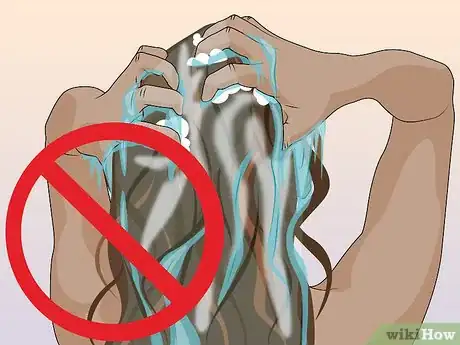

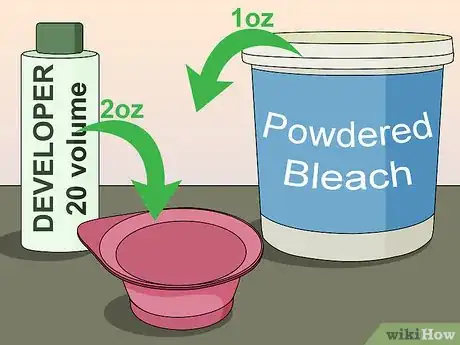

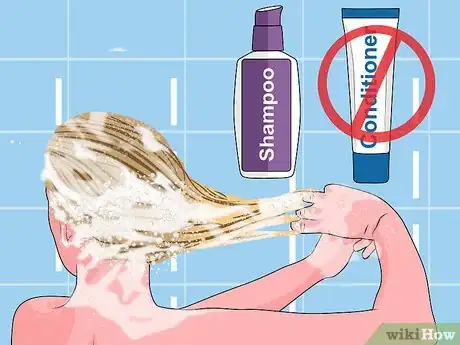
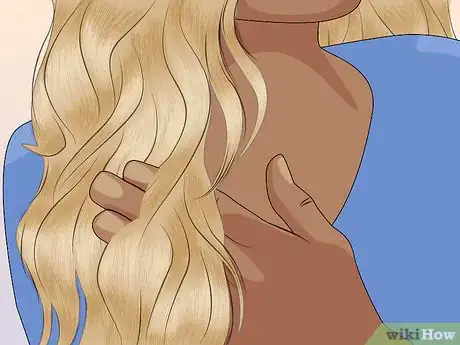
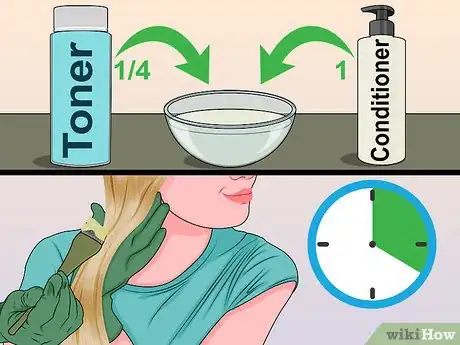
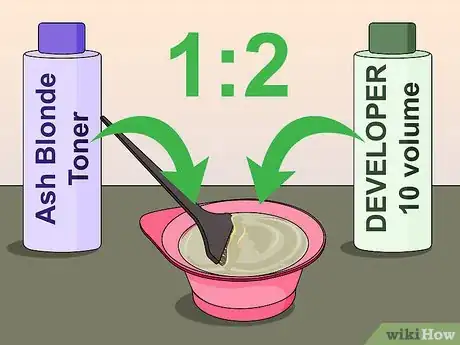

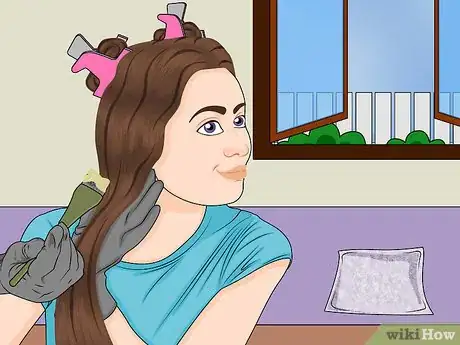
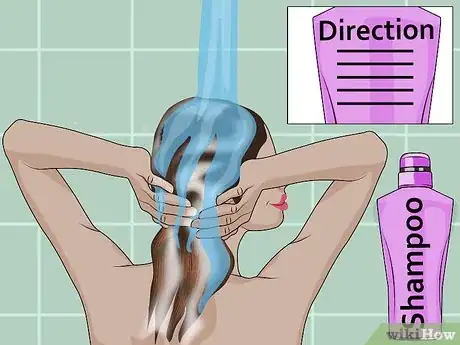
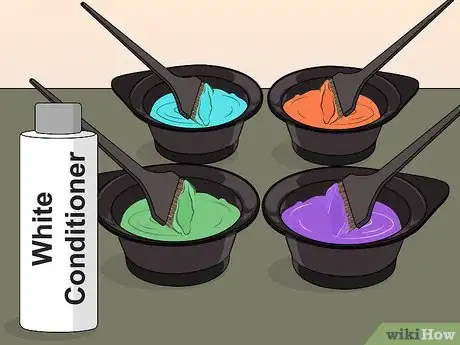
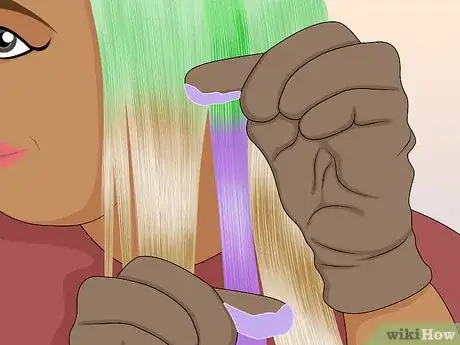
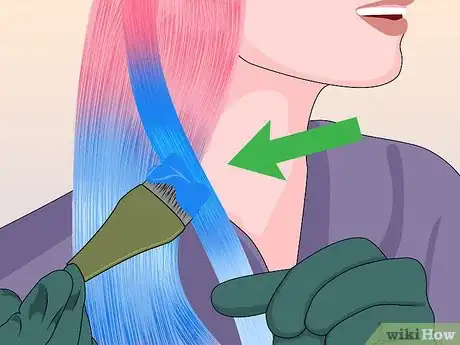
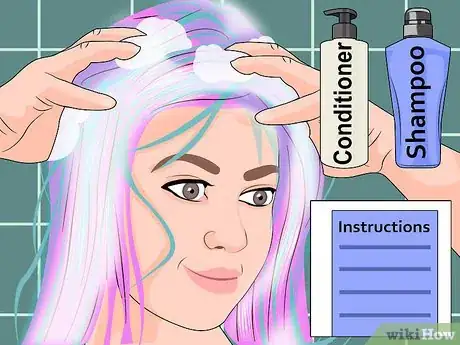

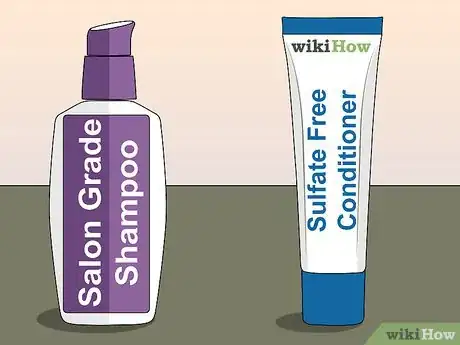
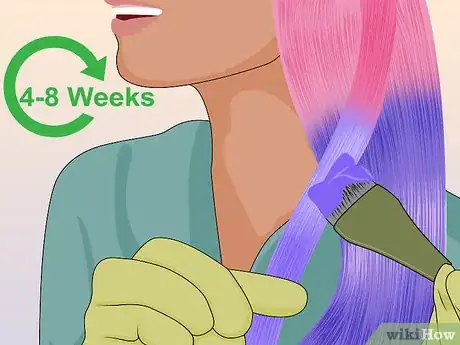


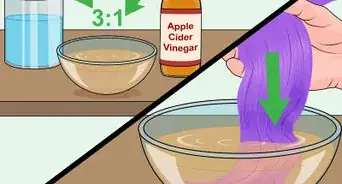
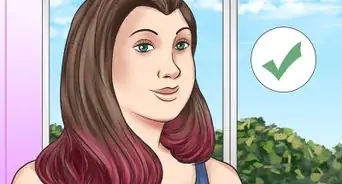
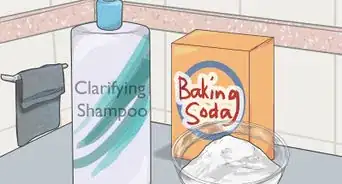
-Hair-at-Home-Step-16-Version-5.webp)
